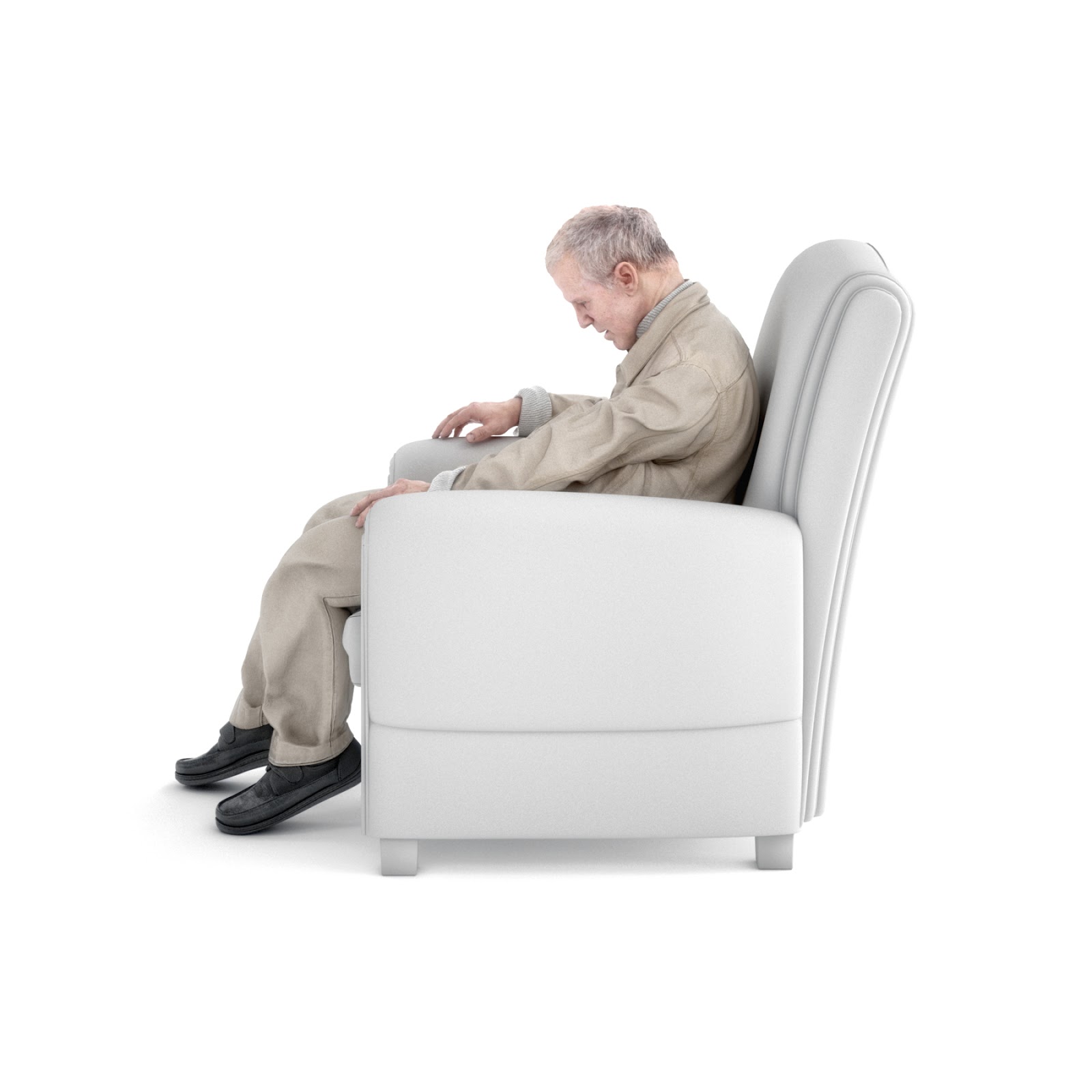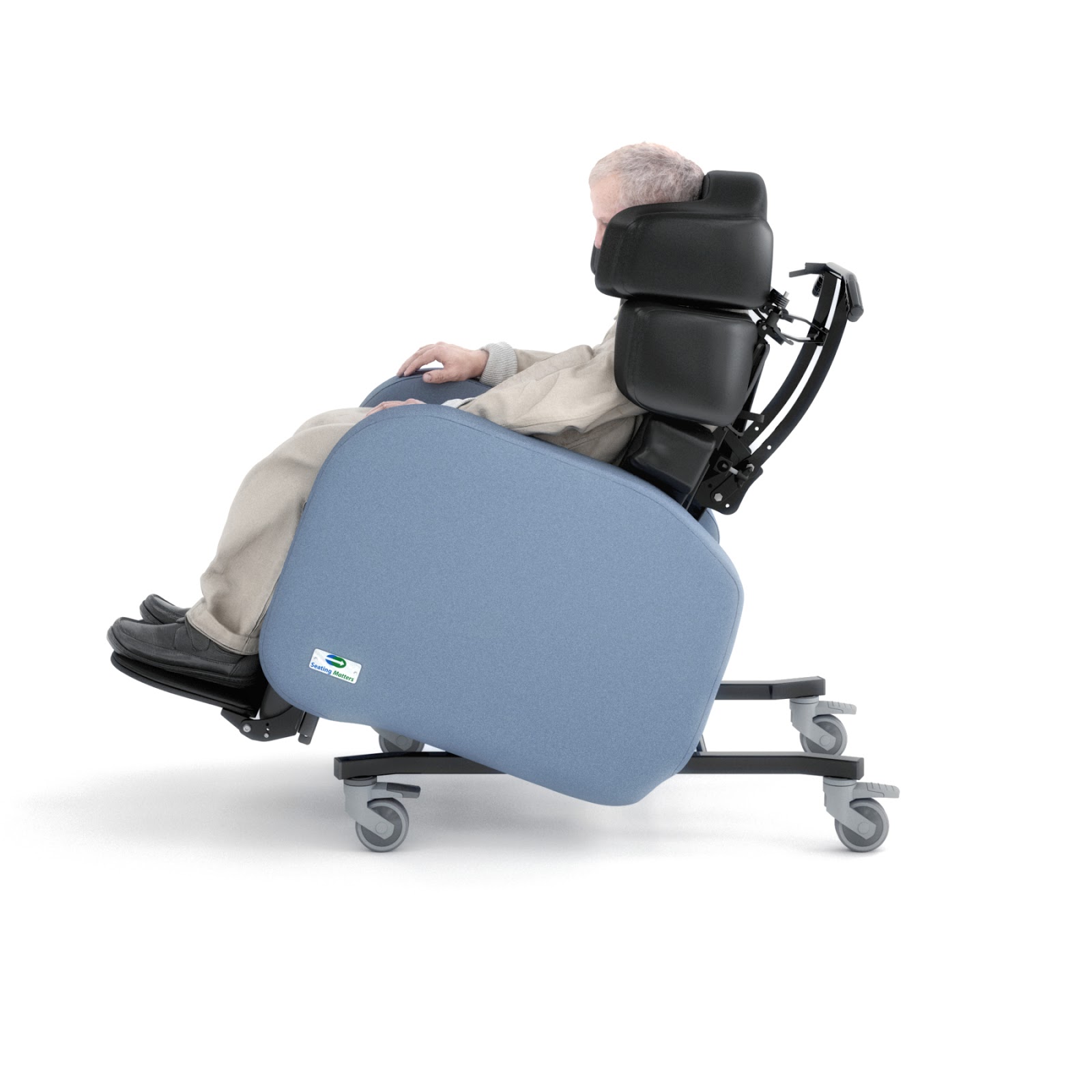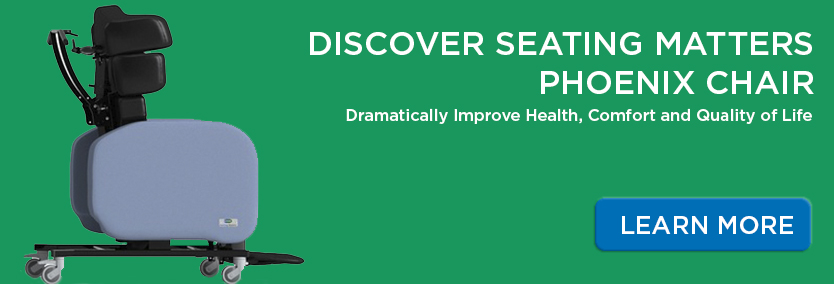Ben, an 87 year old male, had suffered a stroke (CVA), and has osteoarthritis. He had a history of pressure injuries and spent up to 14 hours per day in his chair, along with being hoisted for all transfers.
Ben was a member of the intervention group within the research trial, meaning that he was assessed and matched for a specialist seat from the Seating Matters range.

Ben had suffered multiple problems in his old chair, namely, he had little to no head support, no tilt in space and he had a fixed kyphotic posture, resulting in it being difficult for him to lift his head or extend his neck. Another problematic issue for Ben was his field of vision, which was restricted due to the curvature of the neck and upper spine, leading to safety issues when breathing and eating, meaning that the risk of aspiration was high. Ben would also slide from his chair at regular intervals throughout the day, causing him to developed red areas on his sacrum from the friction and shear. In doing so, this would place an increased burden on caregivers to constantly reposition him. Other significant postural deficiencies included a pelvic obliquity, imbalanced weight distribution, pelvic rotation to the right, as well as a leg length discrepancy.
 After being assessed, it was recommended that Ben be placed in a Phoenix chair because this would improve his postural alignment, as well as reducing, or possibly preventing, further kyphotic deterioration.
After being assessed, it was recommended that Ben be placed in a Phoenix chair because this would improve his postural alignment, as well as reducing, or possibly preventing, further kyphotic deterioration.Upon being seated in the chair, the adjustable laterals, along with the head and shoulder supports, provided essential for the support for Ben’s head and spine. Tilt in space also worked in Ben’s favour, assisting his head and neck into a neutral position over his spine, leading to improvement in his visual field, and placing him in a much safer position for drinking, feeding, and breathing. The seating surface was adjusted to suit Ben’s physical dimensions, eliminating any pelvic obliquity and rotation. Functionally, Ben’s chair could now be moved throughout the home, allowing him to safely spend time in different environments, without compromising posture by transferring him into an unsuitable wheelchair. In addition, Ben did not fatigue as easily in unfamiliar environments and he could participate in activities for longer periods of time without becoming tired and strained.
In conclusion, Ben told caregivers that he is now more comfortable in his new chair and he is extremely pleased to be able to better interact with others in the room.
Discover the Most Supportive Seating Matters Chair to Date

** This post was originally published on http://blog.seatingmatters.com/bens-story

